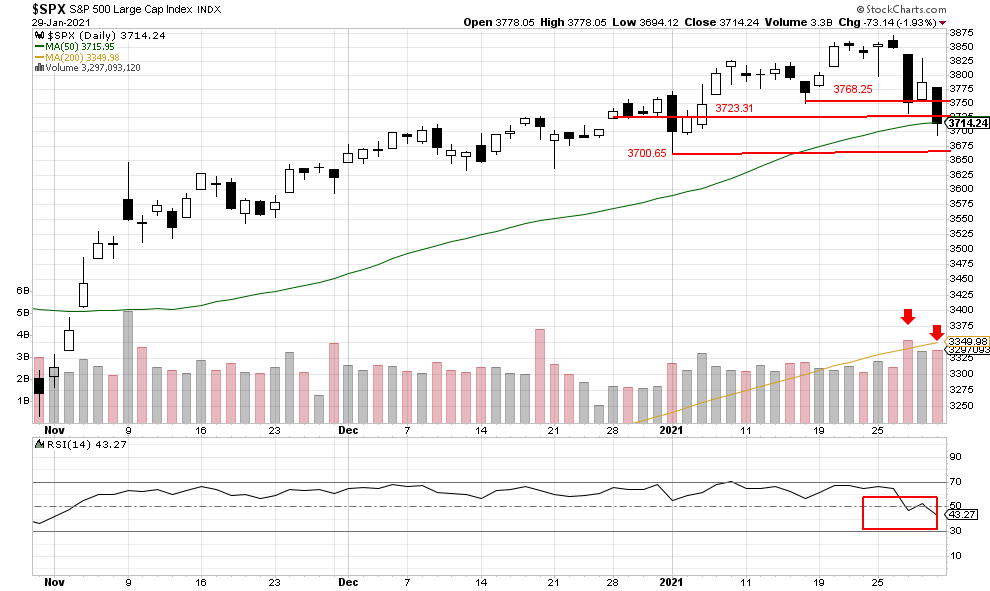Daily Commentary
Markets:
The S&P 500 moved below two important support levels and closed lower at 3714.24 on Friday. The two selloff days came with much higher volume, and the RSI index moved below the midline to close at 43.27. New potential support could now come in at 3700.65, and possible resistance could come in at 3723.21 and 3768.25. Since starting the year trading at new highest the index has reversed course and is now in need of new buyers to come back in soon.
We are currently long-term bullish and short-term bullish.
John N. Lilly III CPFA
Accredited Portfolio Management Advisor℠
Accredited Asset Management Specialist℠
Portfolio Manager, RJ
Partner, DJWMG
Windsor Wealth Planners & Strategist
Futures trading is speculative, leveraged, and involves substantial risks. Investing always involves risk, including the loss of principal, and futures trading could present additional risk based on underlying commodities investments.
The Relative Strength Index (RSI), developed by J. Welles Wilder, is a momentum oscillator that measures the speed and changes of price movements.
The S&P 500 is an unmanaged index of 500 widely held stocks that is generally considered representative of the U.S stock market. Past performance may not be indicative of future results. Keep in mind that individuals cannot invest directly in any index, and index performance does not include transaction costs or other fees, which will affect actual investment performance. Individual investors’ results will vary. Opinions expressed are those of the author John N. Lilly III, and not necessarily those of Raymond James. “There is no guarantee that these statements, opinions, or forecast provided herein will prove to be correct. “The information contained was received from sources believed to be reliable, but accuracy is not guaranteed. Investing always involves risk, and you may incur a profit or loss. No investment strategy can guarantee success. The charts and/or tables presented herein are for illustrative purposes only and should not be considered as the sole basis for your investment decision. International investing involves special risks, including currency fluctuations, different financial accounting standards, and possible political and economic volatility. Investing in emerging markets can be riskier than investing in well-established foreign markets.
This is not a recommendation to buy or sell any company’s stock mentioned above.
Based on monthly questionnaire surveys of selected companies, the Purchasing Managers’ Manufacturing Index (PMI) offers an advance indication on month-to-month activity in the private sector economy by tracking changes in variables such as production, new orders, stock levels, employment and prices across manufacturing industries. The final index for the current month is released roughly a week after the flash.
The manufacturing composite index from the Institute for Supply Management is a diffusion index calculated from five of the eleven sub-components of a monthly survey of purchasing managers at roughly 300 manufacturing firms nationwide. The survey queries purchasing managers about the general direction of production, new orders, order backlogs, their own inventories, customer inventories, employment, supplier deliveries, exports, imports, and prices. The five components of the composite index are new orders, production, employment, supplier deliveries, and inventories (their own, not customer inventories). The five components are equally weighted. The questions are qualitative rather than quantitative; that is, they ask about the general direction rather than the specific level of activity. Each question is adjusted into a diffusion index which is calculated by adding the percentage of positive responses to one-half of the unchanged responses.





